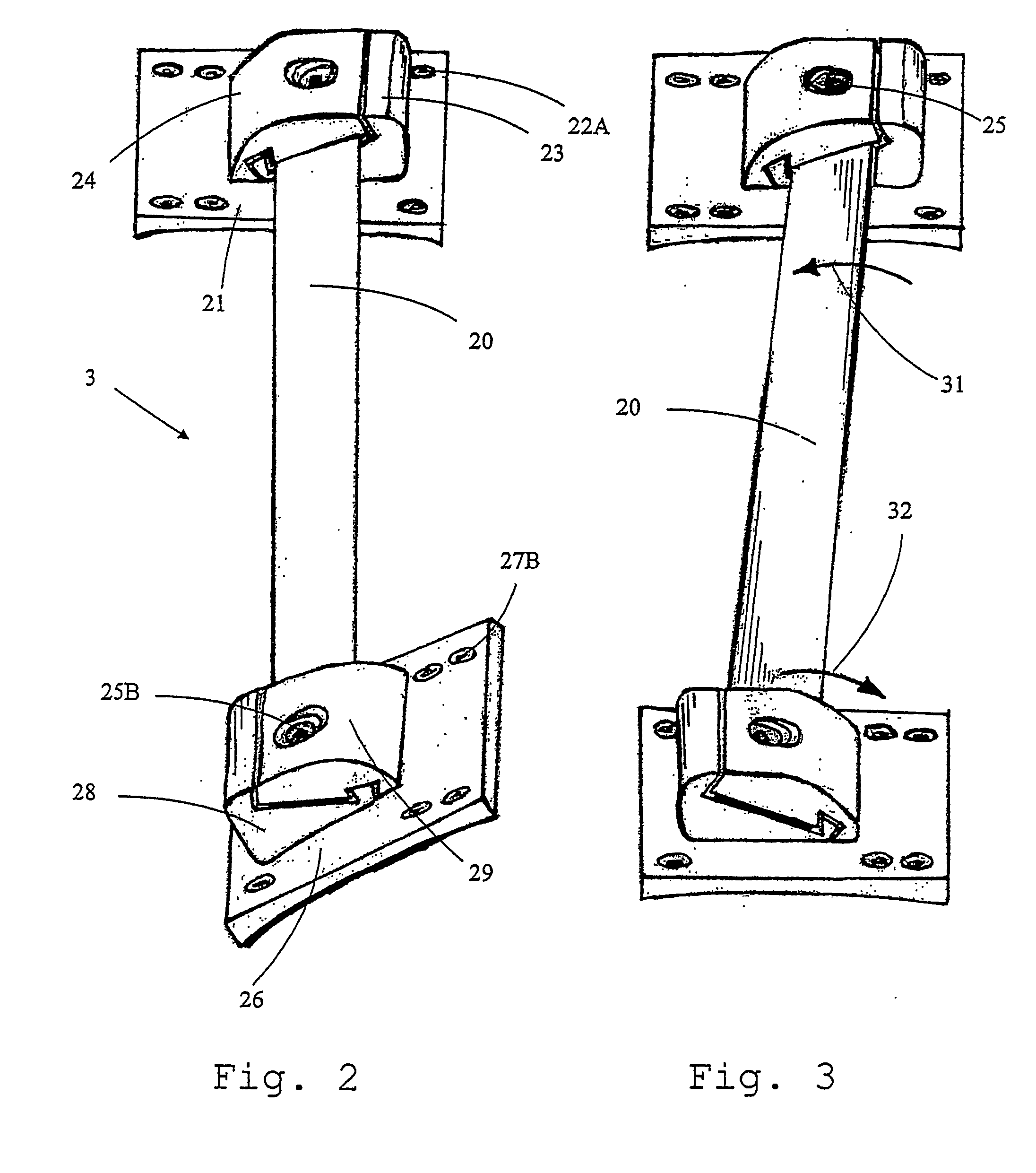Derotational brace for treatment of idiopathic scoliosis
- Summary
- Abstract
- Description
- Claims
- Application Information
AI Technical Summary
Benefits of technology
Problems solved by technology
Method used
Image
Examples
Embodiment Construction
[0068] The following description is provided, alongside all chapters of the present invention, so as to enable any person skilled in the art to make use of said invention and sets forth the best modes contemplated by the inventor of carrying out this invention. Various modifications, however, will remain apparent to those skilled in the art, since the general principles of the present invention have been defined specifically to provide a scoliosis brace useful for providing a controlled and progressive correction of the scoliosis by using pure derotational forces, while retaining a high degree of freedom in 3-D movement of the spinal trunk of the patient.
[0069] The term ‘idiopathic scoliosis’ refers in the present invention to any malfunction of the trunk and / or the spinal column and to the various variants and subtypes, especially adolescent scoliosis.
[0070] The term ‘the brace’ refers in the present invention to any orthosis as hereto described and defined, adapted to treat said...
PUM
 Login to View More
Login to View More Abstract
Description
Claims
Application Information
 Login to View More
Login to View More - R&D
- Intellectual Property
- Life Sciences
- Materials
- Tech Scout
- Unparalleled Data Quality
- Higher Quality Content
- 60% Fewer Hallucinations
Browse by: Latest US Patents, China's latest patents, Technical Efficacy Thesaurus, Application Domain, Technology Topic, Popular Technical Reports.
© 2025 PatSnap. All rights reserved.Legal|Privacy policy|Modern Slavery Act Transparency Statement|Sitemap|About US| Contact US: help@patsnap.com



